Art History honors candidates recently presented the spring installment of their senior colloquium. This is a critical time for our seniors to receive feedback and guidance from their peers and faculty as they move to finalize their theses.
Olivia Andrews ’24

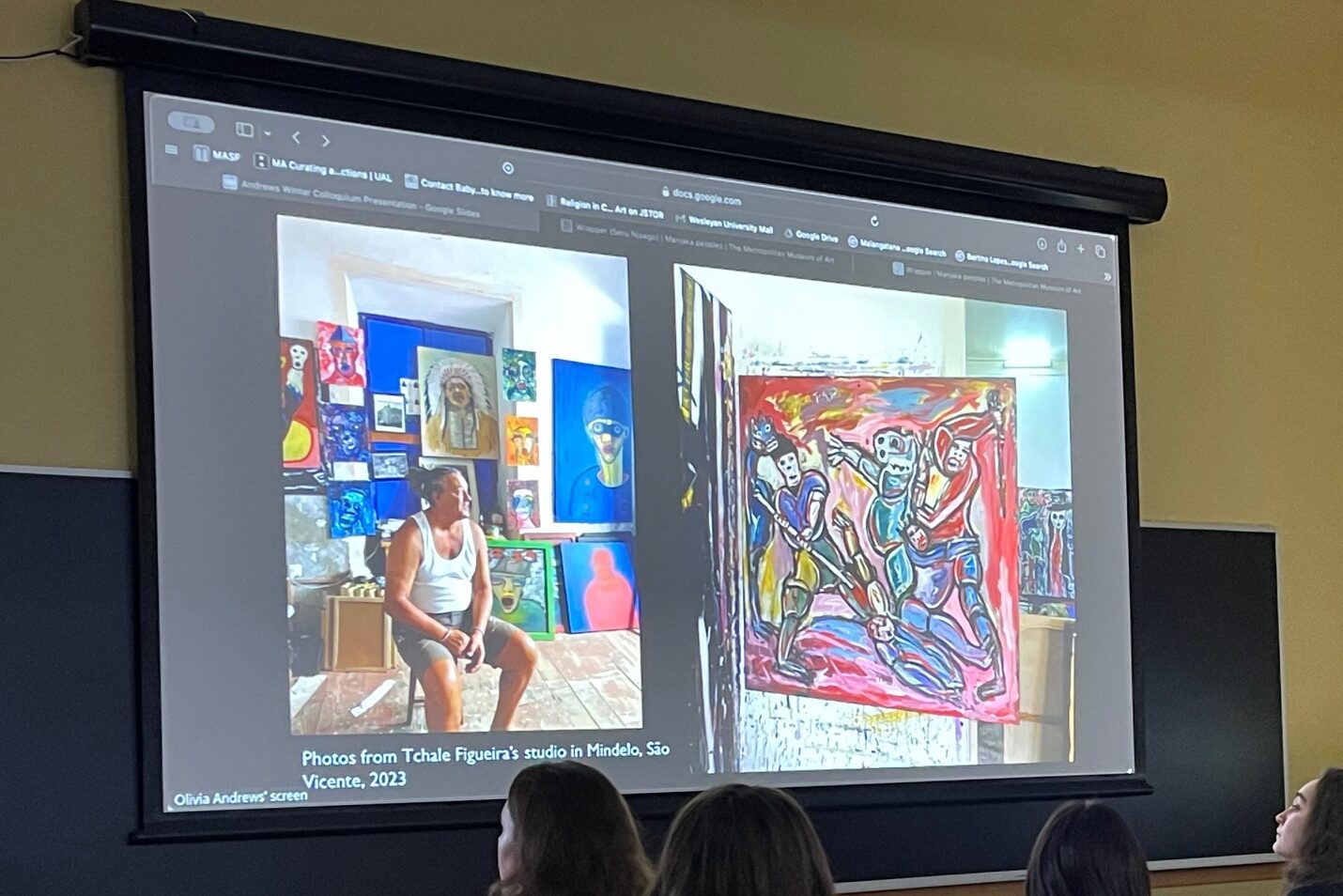
“The Emergence of Cape Verdean Visual Culture After Independence”
Since the fall colloquium, I have been working to dig deeper into my original topic which interrogates local ideologies that deny the presence of art in Cape Verde and explores how artists today are grappling with both local and global influences in the creation of a globally visible, indigenous art culture. Building off of this, I believe that “real art” in Cape Verde may be defined as art that is widely circulated and included in global art discourses — something that a majority of Cape Verdean art has not accomplished. My thesis now traces Cape Verde’s international visibility, starting with the global circulation of the textile panu di tera during the transatlantic slave trade. From here I dive into the present, emphasizing the plurality of Cape Verdean “identities” while also highlighting the pressures and tensions within the art community concerning how Cape Verde should be presented on global stages. My last chapter centers artists of the Cape Verdean diaspora, contemplating on the future of Cape Verdean narratives. As now there are more Cape Verdeans living in the diaspora than in the country itself, one question I look forward to further investigating is what role art will play in preserving Cape Verdean culture as it is spread and submerged into various cultures around the world. Some helpful feedback I received was to reflect more on where Cape Verdean art is being exhibited, what artistic traditions are most uplifted in public spaces, and what this might foreshadow about the future of Cape Verdean art. text
Bailey Chapin ’24
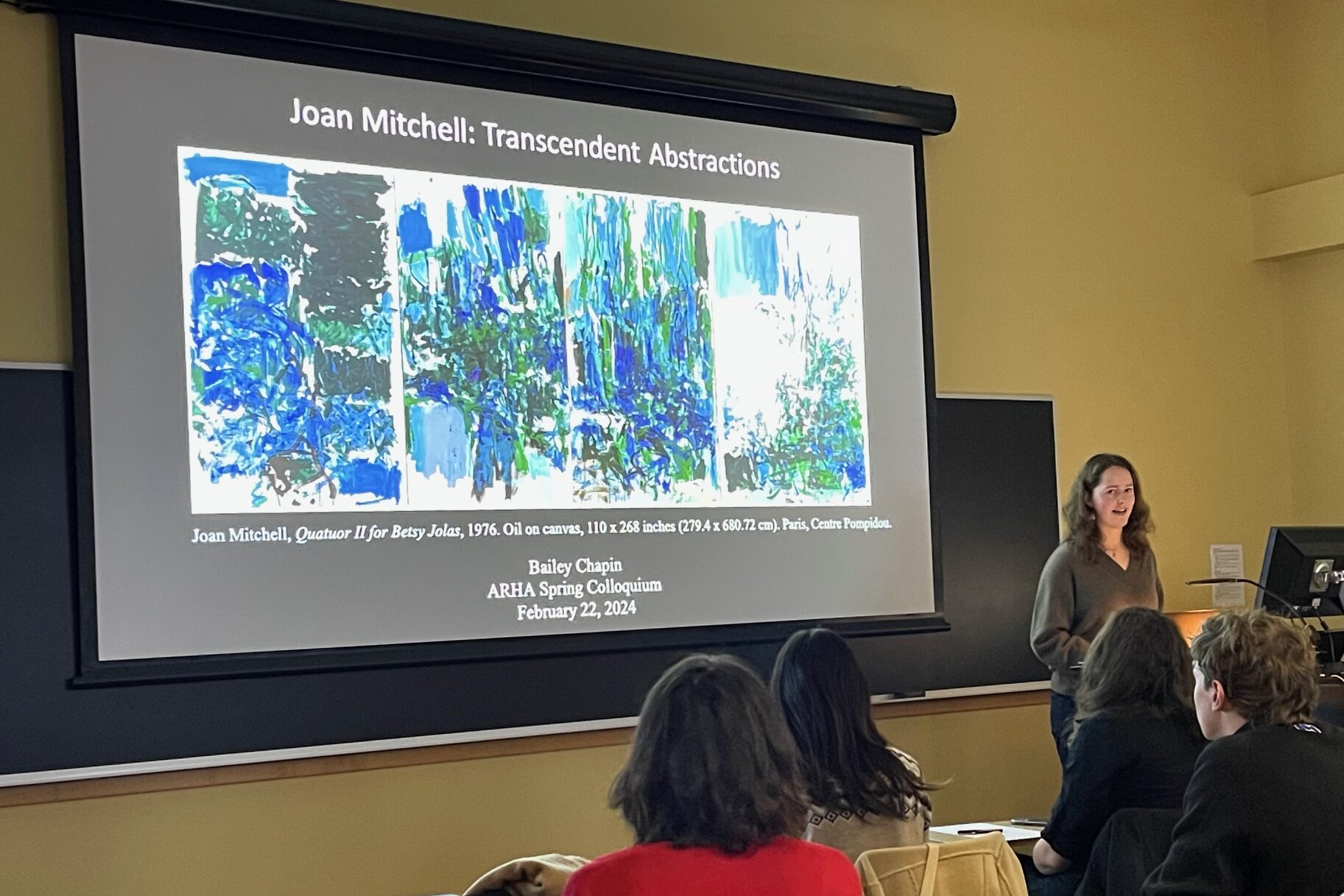
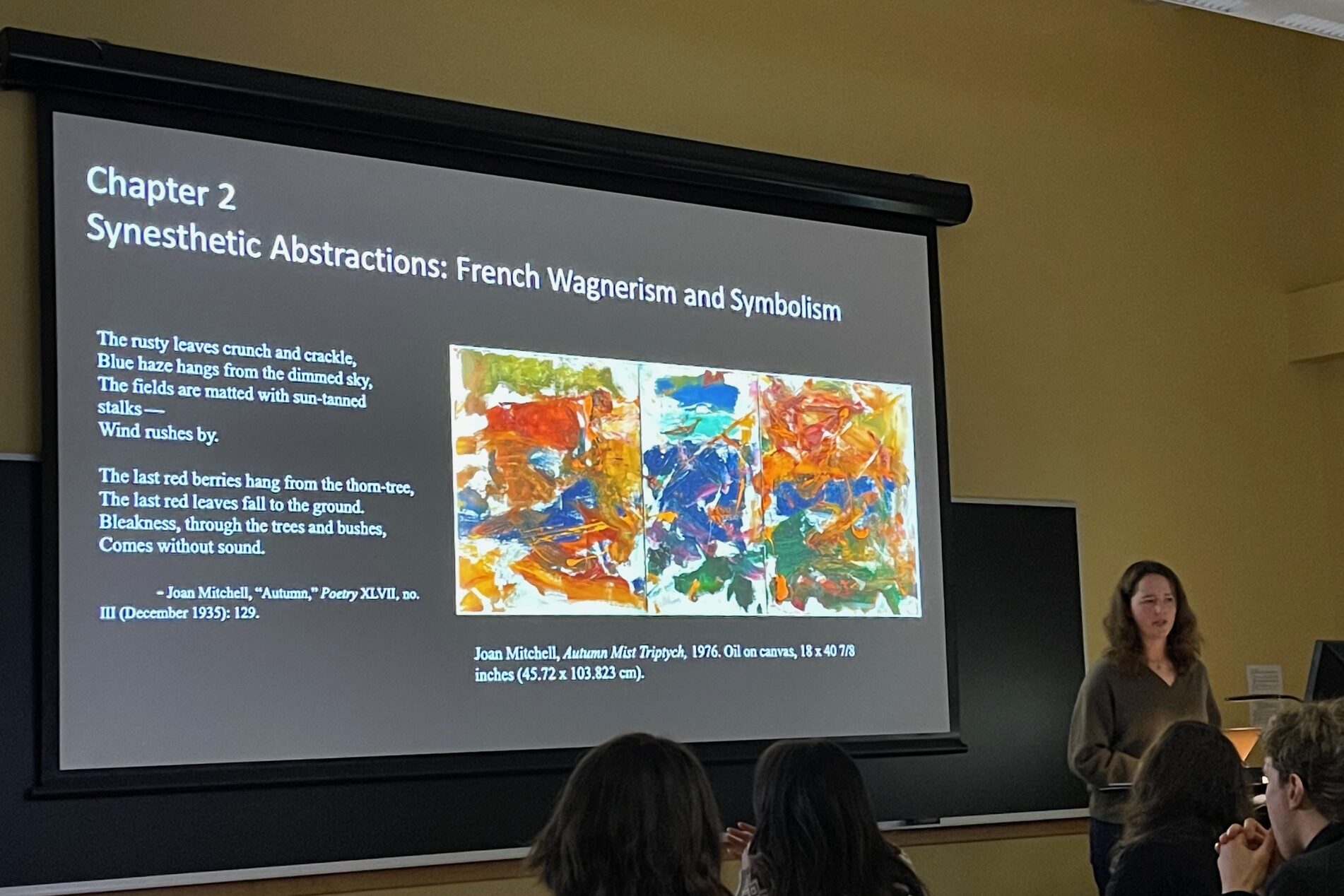
“Joan Mitchell: Transcendent Abstractions”
At the second colloquium, I presented an updated work in progress on my research studying Joan Mitchell’s career in Paris and Vétheuil. Challenging a dominant account of postwar abstraction as an American, macho domain, I uncover, rather, Mitchell’s work as transnational, communitarian, and multi-dimensional. I heard valuable feedback from the audience concerning questions of Mitchell’s cultural and aesthetic references, points of contact in the United States and abroad, and formal interrelationships between painting, poetry, and music. The colloquium advanced my thinking as I continue ahead on Chapter three, revealing seriality in Mitchell’s late work as integral to her dream of the restorative power of the countryside. I look forward to presenting my final project in April and to hearing from Olivia, Emma, and Sabrina as well. I’m grateful for the support of the Art History Department and Senior Honors Cohort amidst this final stretch of research and writing!
Emma Flaherty ’24

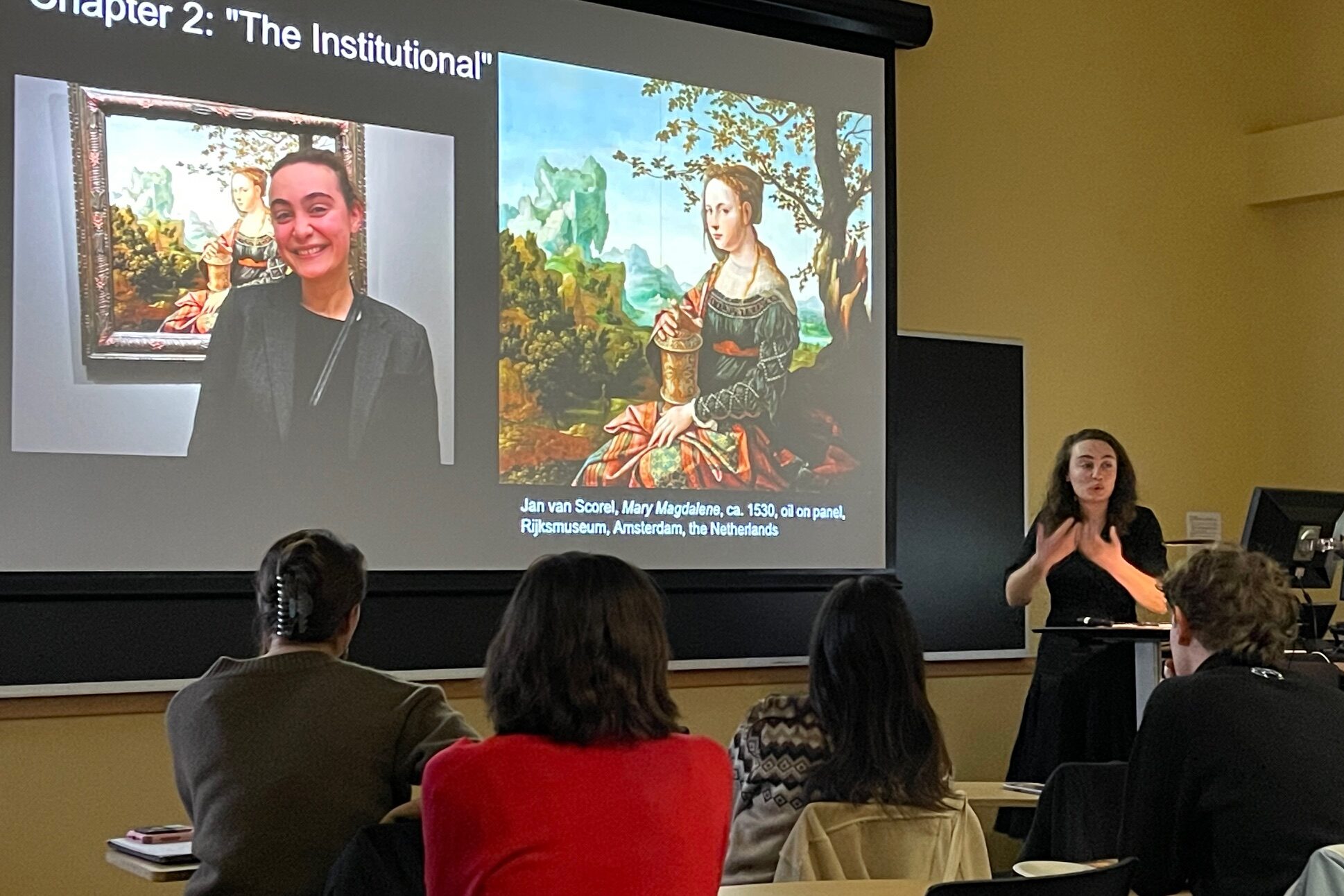
“Jan van Scorel as Artist-Pilgrim: The Anatomy of a Pilgrimage”
Since presenting at the Fall Colloquium, I have largely finished writing my thesis and am now working on reorganizing my chapters more around the idea of Jan van Scorel as Artist-Pilgrim. Since the Fall Colloquium, I also was able to travel to the Netherlands, supported by the John. T. Paoletti Travel Research Fellowship, to conduct research in museums, archives, and churches in order to enrich my understanding of Scorel’s environment and artwork. I was thrilled to be able to share my observations, especially of scale and underdrawing technique, with the faculty of the department at the Colloquium, and I received such encouraging feedback which I am grateful for!
Sabrina Tian ’24
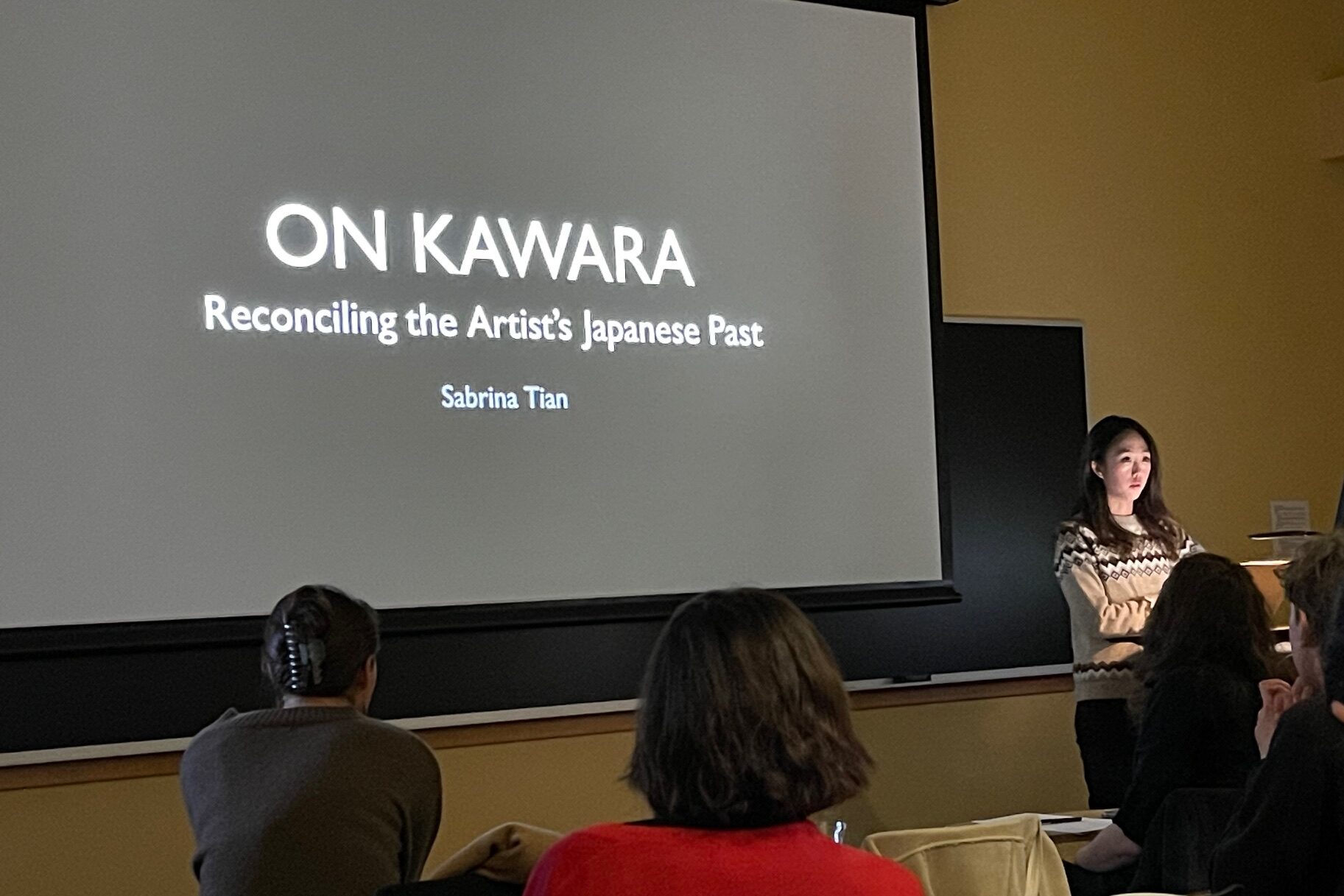
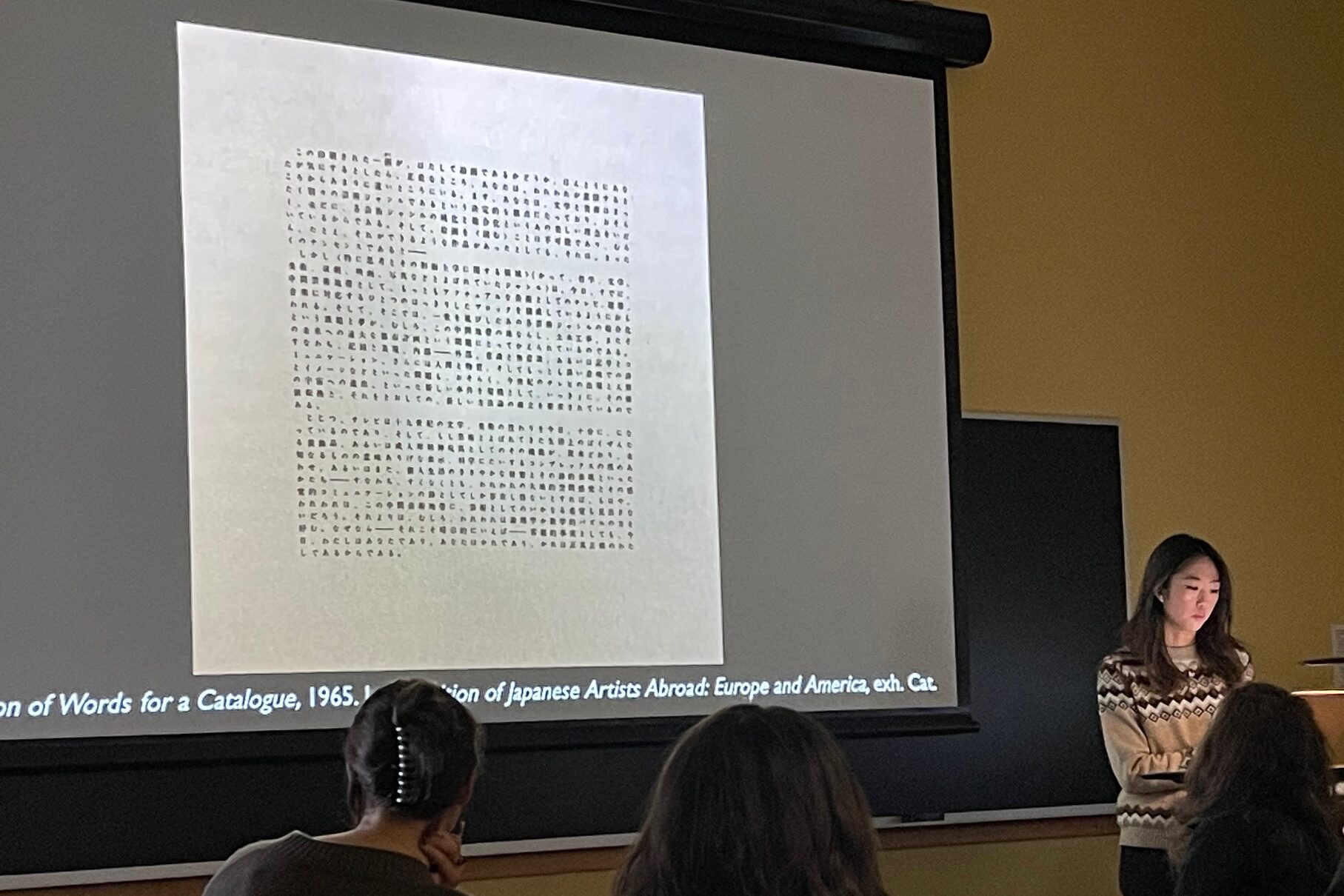
On Kawara: Reconciling the Artist’s Japanese Past”
Since the fall, I’ve developed a clearer idea of the narrative arc of my thesis on On Kawara. During the spring colloquium, I mainly focused on the chapter that I am currently researching called Composition of Words for a Catalogue. I relate the work’s form and content to Kawara’s desire to transcend various categorizations and binaries such as those of visual arts/literature, author/viewer, and Japan/America. It has been challenging to write about this obscure work, but it has been equally fulfilling to contribute something to the literature on Kawara. The help of my Wesleyan professors, Kawara’s foundation, and those who have met him have been much appreciated during this process. I’m looking forward to fleshing this chapter out and weaving everything together in my introduction!
Mark your calendars for their final presentations at “Senior Talks in the History of Art” on Thursday April 25th, Boger 112, 4:30pm.
For more information on Honors in Art History, visit the ARHA Website: https://www.wesleyan.edu/art/arthist/honors_in_art_history/index.html

